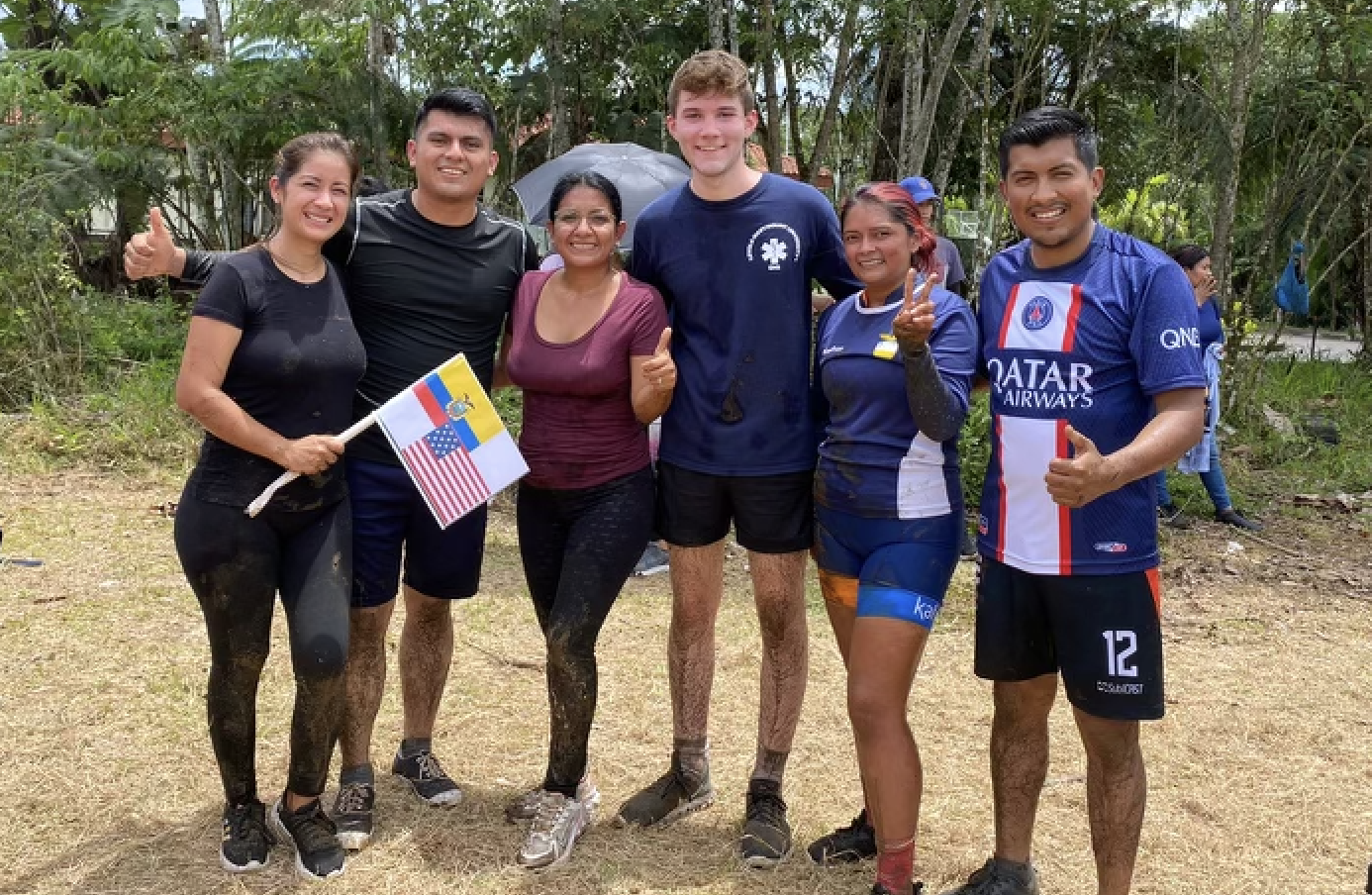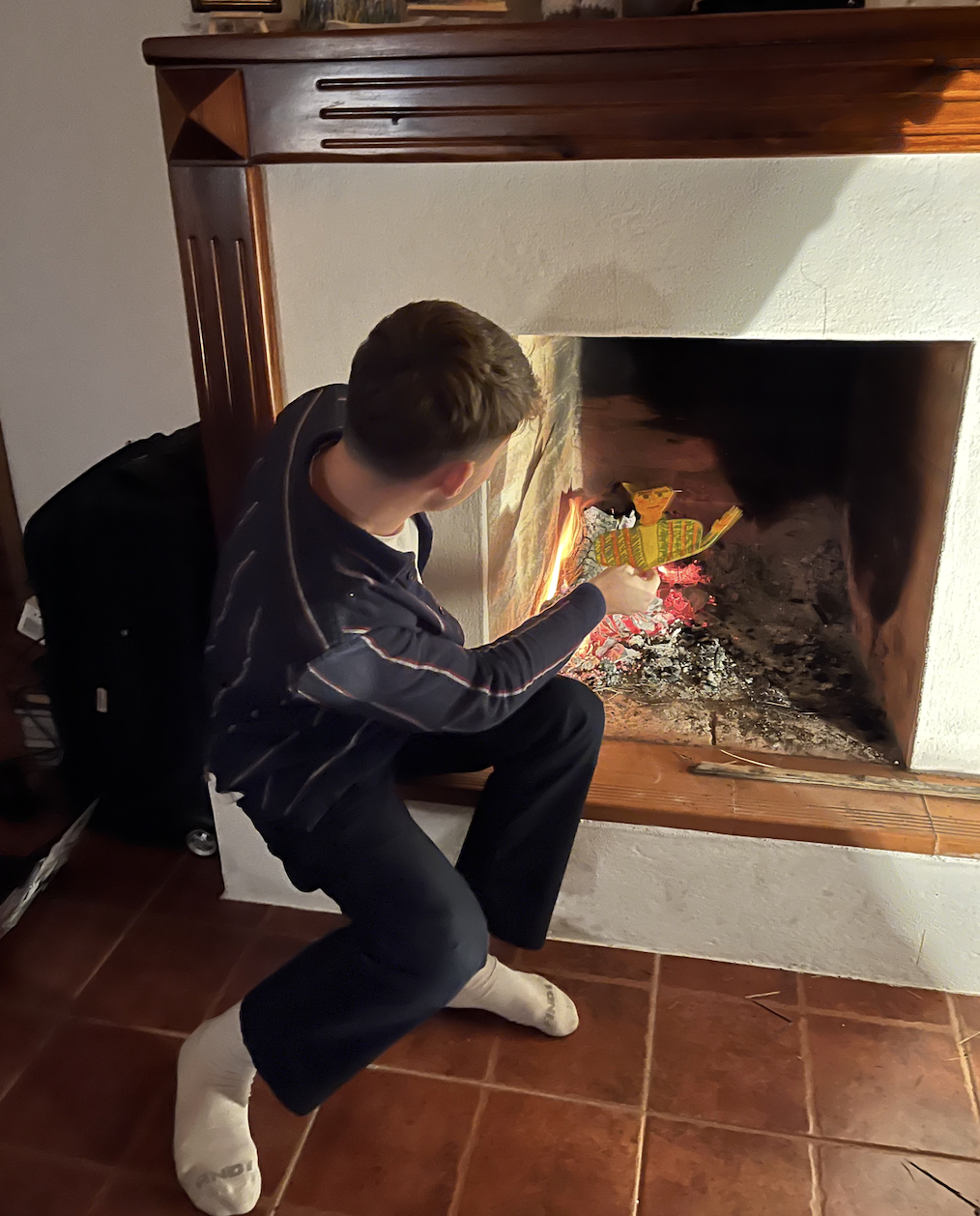ONIF Student Spotlight
March 1, 2024

Name: Eamon Shaw
Pronouns: He/him/his
Majors: BS in Economics and BA in Spanish
Graduation Date: May 2023
Fellowship Award: I am very fortunate to be a current grantee in the Fulbright U.S. Student Program! I am an English Teaching Assistant (ETA) at Universidad Regional Amazónica Ikiam outside the city of Tena in the Amazon region of Ecuador. There, individually and in collaboration with other professors, I teach English to undergraduate students who are studying to become scientists, architects, and engineers. Ikiam is unique in many ways, but it is especially remarkable as its mission is to develop solutions for the environmental challenges facing the Amazon, Ecuador, and the world.
What are your current or future career plans? Ideally, I would love a career that combines my interests in cultural exchange, education, economics, and health. I am in the process of applying to study medicine, and I want to explore a career in public health in the future. My dream job is to be a medical doctor, and in a perfect world, I will also have the time to explore the intersection of medicine and global health, health education, and health economics.
What did you enjoy most about the program? Without a doubt, the cultural exchange I have participated in has been the most gratifying part of this experience. While my role as an ETA is largely to share my American culture with my students and community, I admit that I enjoy learning about Ecuadorian culture even more. One beautiful custom I’ve learned about is the “minga”, which is a collaborative, concerted effort made to get something done. On the day of a minga, every member in the community volunteers in some way to help complete a project that will benefit the entire community. This project could be, for example, building a home, harvesting crops, or repairing a road. The minga is extremely well-organized and relies on trust, goodwill, and solidarity. It is truly impressive and inspiring.

What was the most challenging aspect of the program? Aside from getting used to the variety of lizards, snakes, and spiders the Amazon has to offer, it has been a challenge in many ways to define and present American culture to my students. At the start of this experience, I found myself puzzled over how to describe to my students aspects of daily life in America that I had never thought twice about before. Although I was putting lots of thought into lessons dealing with complex topics, ranging from the true nature of Thanksgiving to current issues facing Los Angeles, it was questions about why we Americans build houses out of wood, why we dress so casually, and why we don’t greet with a cheek kiss that stumped me.

What advice do you have for future applicants? To future applicants to the Fulbright Program, I would say, when thinking about your reasons for pursuing a Fulbright grant and when considering to which country to apply, ask yourself not only what you can bring to the table but also what you would like to take away from that culture. Listen to the experienced guidance and expert support from ONIF (shoutout to Cassidy and Lindsay!), but also take some time to introspect by yourself about your reasons and goals for seeking this experience. You won’t ever feel one hundred percent certain about what you write in your application, but, as you are writing, get to a place where you’ve given enough thought to everything so that you have a better understanding about your ultimate path regardless of whether you receive a Fulbright. You won’t regret it.
What would people be surprised to know about your experience? As part of my grant, alongside teaching English, I am conducting a supplementary project to facilitate an exchange of knowledge regarding health and medicine. So far, this has included leading first-aid workshops and auditing an ethnopharmacology class at Ikiam. I am trying to take full advantage of my time in Ecuador by learning Kichwa, a language indigenous to the region (closely related to Quechua) and the second-most spoken in the country. I have also not shied away from trying new foods typical of Ecuador, including cuy (guinea pig), chontacuro (a type of grub), and guagua de pan (sweet bread shaped like a little baby, a traditional food for Day of the Dead), all of which I’ve enjoyed.
---
Learn more about the Fulbright ETA to Ecuador Program or contact ONIF.